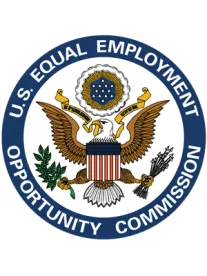Every year, the EEOC publicly releases information detailing what the agency has been working on during the past fiscal year. These breakdowns, when analyzed on a year-over-year basis, shed light on “hot” areas where claims may be spiking and can provide insight into the agency’s enforcement priorities – all key areas to watch for employers.
In April 2019, the EEOC released a detailed breakdown of the approximate 76,000 charges of workplace discrimination filed during Fiscal Year 2018 (ending September 30, 2018). For the non-number crunchers in the room, here are some key takeaways from the data:
Overall Volume
Nationwide, the EEOC received 76,418 charges and resolved 90,558 charges (the latter figure includes charges from prior fiscal years that were resolved during the last fiscal year). The agency filed 199 lawsuits, 117 of which alleged individual instances of discrimination, 45 of which alleged discriminatory policies, and 37 of which alleged systemic discrimination. In sum, the total number of charges filed in Fiscal Year 2018 was down almost 10% from those filed in Fiscal Year 2017.
While the decrease in the number of overall charges is certainly comforting, keep in mind that the rise and fall in the volume of overall charges is cyclical and is often correlated with the strength of the economy. In recent years, we have continued to see steady low rates of unemployment, which could certainly account, at least in part, for the overall decrease in the volume of charges filed.
Location, Location, Location
As in past years, the relative hot spots for EEOC charge activity remained consistent. Texas leads the pack with 7,482 charges, followed by Florida with 6,617 charges. Georgia, Pennsylvania, and Illinois rounded out the top five states. These states are all large population centers with relatively active plaintiff’s bars. Remember, however, that all claims do not necessarily come through the EEOC. For example, California, which is the largest state by population, comes in at number six on the list, with 4,344 charge receipts. But the Golden State has a robust state statutory scheme in place, which may make the EEOC charge numbers look much lower than the overall number of workplace discrimination claims filed in the state.
#MeToo and Retaliation
It would be hard to escape the prevalence of the #MeToo movement as a societal game changer, and its effect has also been felt in terms of charges filed with the EEOC. In April 2019, the EEOC’s Acting Chair Victoria A. Lipnic underscored the impact of the #MeToo movement on the EEOC’s workload in the press release announcing this breakdown, stating “. . . we cannot look back on last year without noting the significant impact of the #MeToo movement in the number of sexual harassment and retaliation charges filed with the agency.”
While the total volume of charges trended downward overall, the number of charges relating to sexual harassment and related retaliation have increased. In a similar vein, the EEOC also reported a total recovery of $56.6 million for alleged victims of sexual harassment in Fiscal Year 2018. These spikes are likely a direct result of widespread publicity about the #MeToo movement, which has encouraged more open discussions about these types of issues in workplaces across the country.
As with years past, claims for retaliation amounted to the largest portion of charges, 51.6%, followed closely by sexual harassment at 32.3%, disability at 32.2%, and race at 32.2%. Note that the percentages add up to more than 100%, given that many charges allege multiples bases for discrimination.
The Takeaway
Employers and counsel alike do not have a crystal ball and cannot predict when and where the next charge or lawsuit filed by an employee will come from. However, what the statistics continue to show year after year is that the political climate, social concerns, and social movements, and the economy will continue to affect the volume and types of charges of discrimination employers face.
So what to do with this information? These yearly breakdowns are another reminder of the critical importance of policies, training opportunities, and investigation procedures that will serve as the front line of an employer’s defense. Conscious efforts by leadership to build a workplace culture of inclusion will continue to pay dividends as the landscape of EEOC enforcement activities changes every year.




 />i
/>i

